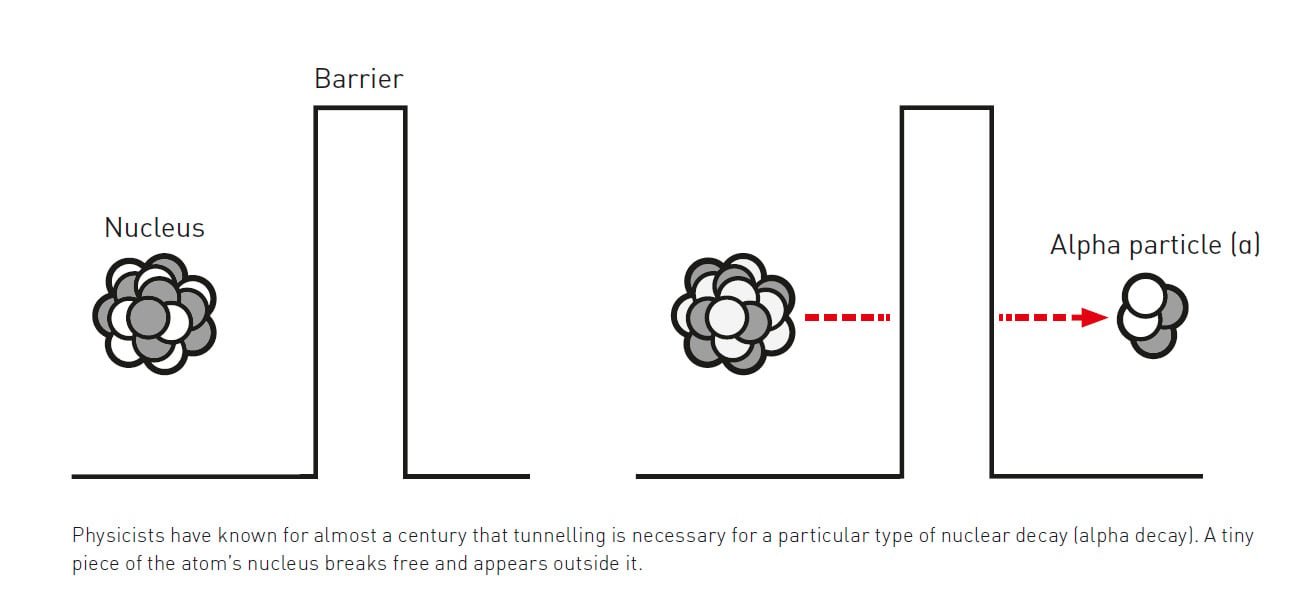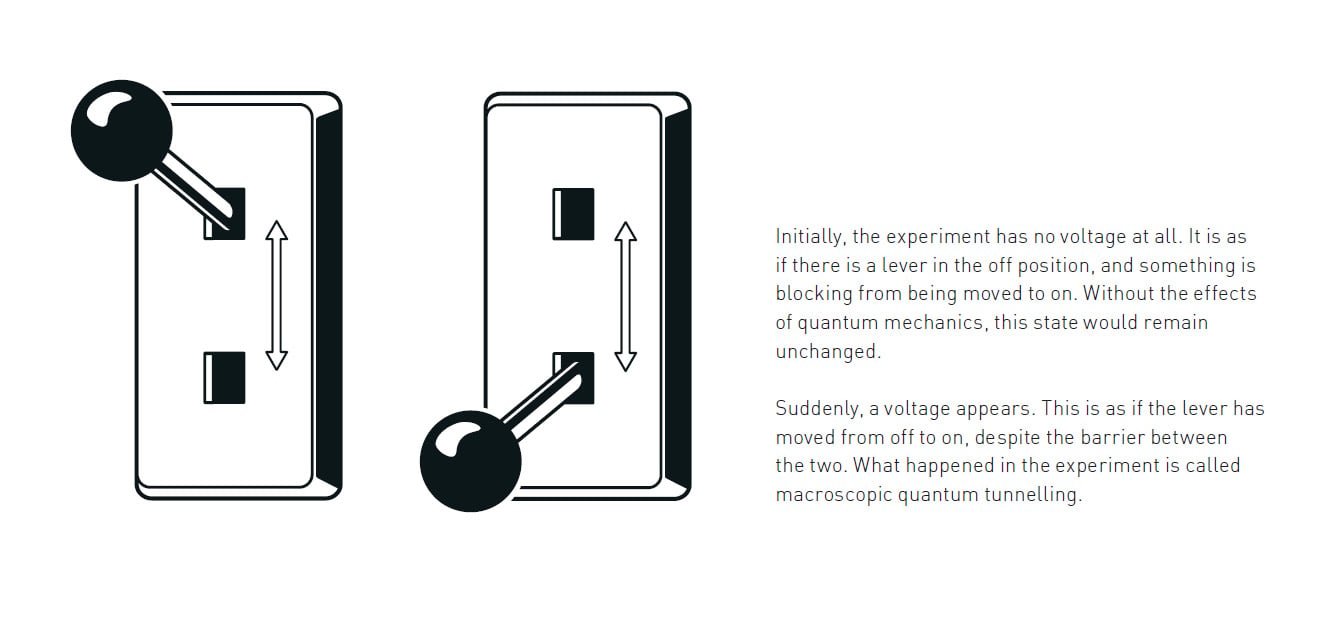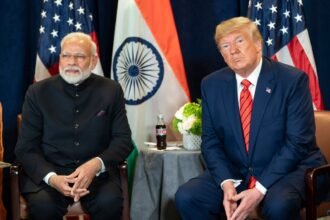The Royal Swedish Academy of Sciences has announced that the 2025 Nobel Prize in Physics will be jointly awarded to three scientists: John Clarke, Michel H. Devoret and John M. Martinis. They have been given this prestigious honor for their groundbreaking experiments related to the “discovery of macroscopic quantum mechanical tunnelling and energy quantisation in an electric circuit” which made the bizarre rules of the quantum world tangible in a system large enough to be held in the hand.
Their discoveries have laid a new foundation for research in the field of quantum physics and have raised new hopes for revolutionary technologies like quantum computers.
What is this Revolutionary Discovery? ‘The Ball That Goes Through the Wall’
Our everyday world operates on the rules of classical physics. If you throw a ball at a wall it will always bounce back. This is a macroscopic phenomenon, involving an astronomical number of molecules.

However, the world of quantum physics which operates on the scale of single particles is very strange. In this microscopic world, a particle can sometimes pass straight through a barrier (like a wall) and appear on the other side, even if it classically does not have enough energy to do so. This incredible phenomenon is called Quantum Tunnelling. For decades it was believed that this effect was only possible at the microscopic level.
They constructed a superconducting circuit roughly a centimetre in size, where billions of Cooper pairs acted collectively as a single quantum entity. This experiment translated the quantum mechanical effects of tunnelling and energy quantization from microscopic particles to a macroscopic scale.

Transition suggestion: To appreciate the depth of this discovery, it is essential to understand how these scientists demonstrated this microscopic phenomenon in a macroscopic, measurable system.
This year’s Nobel-winning discovery shatters that notion. These three scientists built a system that was macroscopic i.e., it could be seen and touched yet it behaved like a single particle and demonstrated quantum tunnelling. They constructed an electrical circuit in which billions of charged particles worked in unison, as if they were a single “macro-particle”. This “macro-particle” escaped a state in which it was trapped and generated a voltage just like a ball passing through a wall.

Contribution of the Nobel Laureates
This discovery is not the result of a single ‘Eureka’ moment but the culmination of decades of tireless work, challenging doubts, and focused research conducted in a single direction.
Designing a Groundbreaking Experiment
In 1984 and 1985, at the University of California, Berkeley, in John Clarke’s laboratory, his postdoc Michel Devoret and doctoral student John Martinis took on the challenge of demonstrating macroscopic quantum tunnelling.
Their special electrical circuit was composed of:
- Superconductors: Materials that conduct current with zero electrical resistance.
- A Josephson Junction: A thin insulating layer separating two superconductors.

In this circuit, electrons form Cooper pairs which flow in a synchronized dance. These billions of Cooper pairs lose their individual identity and behave as a single quantum system, described by a single wave function.

Proof of Macroscopic Quantum Tunnelling
In the experiment, this system was initially trapped in a zero-voltage state; classically, it lacked the energy to escape. But the team showed, through repeated measurements, that after a certain time, the system would “tunnel” out of this state, suddenly generating a voltage. Because this was a quantum process, it involved an element of chance, and they calculated its probability based on thousands of measurements.
Energy Quantization: The Second Confirmation
They took another step to solidify their discovery. They proved that the energy of their macroscopic system was quantized meaning it could only absorb energy in specific, discrete packets (quanta), just like an atom does. They introduced microwaves of varying wavelengths into the circuit and found that only certain ones were absorbed, causing the system to jump to a higher energy level. This was irrefutable proof that their macroscopic circuit was indeed following quantum rules.

Add-on line: Their combined efforts not only turned a theoretical possibility into an experimental reality but also opened up a new playground for quantum physics.
The Future and Applications of This Discovery
Introductory line: These findings have not only deepened our understanding of the quantum world but have also inspired technologies that are redefining the boundaries of computation and physics.
- Quantum Computing: The most significant impact of this discovery is in the field of quantum computing. The circuit created by these scientists was essentially a large-scale ‘artificial atom’ that could be controlled with wires and sockets. Later, John Martinis used this very concept of energy quantization to create quantum bits or qubits. He used the lowest energy state as ‘zero’ and the next state up as ‘one’. Today, superconducting circuits are one of the leading technologies used worldwide to build quantum computers.
- Quantum Simulation: These artificial atoms can be used to simulate other complex quantum systems, helping us better understand material science and fundamental physics.
- Precise Measurements: Devices based on Josephson junctions are used for extremely precise measurements of magnetic fields and other physical constants.
Add-on: These applications collectively signify a paradigm shift from theoretical quantum physics to a practical engineering discipline.
Special for UPSC Aspirants (GS Paper 3: Science & Technology)
This topic is extremely important for the UPSC Civil Services Examination. Questions can be asked from it in the Science and Technology section, especially relating to Nanotechnology, IT & Computers, and awareness of new technologies.
Editorial Note: Aspirants should connect this topic with India’s National Mission on Quantum Technologies and Applications (NM-QTA) and understand how this technology is strategically important for India.
Key Terminology
Quantum Tunnelling: A quantum-mechanical phenomenon where a particle tunnels through a potential energy barrier that it classically cannot surmount.
Macroscopic: Large-scale objects, composed of a large number of particles, that can be seen without a microscope.
Superconductivity: A property of certain materials to exhibit zero electrical resistance and the expulsion of magnetic fields when cooled to a very low temperature.
Josephson Junction: A device consisting of two superconductors separated by a thin insulating layer, which allows Cooper pairs to tunnel across.
Cooper Pairs: Pairs of electrons that are bound together in superconductors and flow without resistance.
Energy Quantization: The principle that energy can only be absorbed or emitted in discrete, small packets or ‘quanta’.
Qubit (Quantum Bit): The basic unit of quantum information, which can exist in a superposition of both 0 and 1 states simultaneously.
Potential UPSC Prelims Question
Question: With reference to the 2025 Nobel Prize in Physics, consider the following statements:
- In the phenomenon of macroscopic quantum tunnelling, billions of particles behave as a single entity.
- The Josephson junction used in this discovery operates at normal room temperature.
- A major application of this discovery is the development of qubits for quantum computers.
Which of the above statements is/are correct?
(a) 1 and 3 only
(b) 2 only
(c) 1 and 2 only
(d) 1, 2 and 3
✅ Answer: (a) 1 and 3 only
Explanation: Statement 1 is correct. Statement 2 is incorrect because Josephson junctions and superconductivity require extremely low, cryogenic temperatures. Statement 3 is correct.
Potential UPSC Mains Question (GS Paper 3 – Science & Technology)
Question: Explain the concept of “Macroscopic Quantum Tunnelling”. How has the 2025 Nobel Prize-winning discovery in Physics advanced this understanding, and what are its potential technological applications? (250 words)
Answer Outline:
Introduction: Define quantum tunnelling and explain why it was traditionally considered a microscopic phenomenon.
Significance of the Discovery: Mention how John Clarke, Michel Devoret, and John Martinis used a superconducting circuit and a Josephson junction to demonstrate that a macroscopic system can also exhibit quantum tunnelling and energy quantization. Explain how billions of Cooper pairs acted as a single entity.
Technological Applications:
- Quantum Computing: Explain how this discovery formed the basis for creating “artificial atoms” and qubits, which are the foundation of quantum computers.
- Quantum Simulation and Sensors: Mention its role in studying other complex systems and in developing highly sensitive sensors.
Conclusion: Describe this discovery as a milestone in quantum physics, transforming theoretical science into practical engineering, and highlight its importance for missions like India’s NM-QTA.















